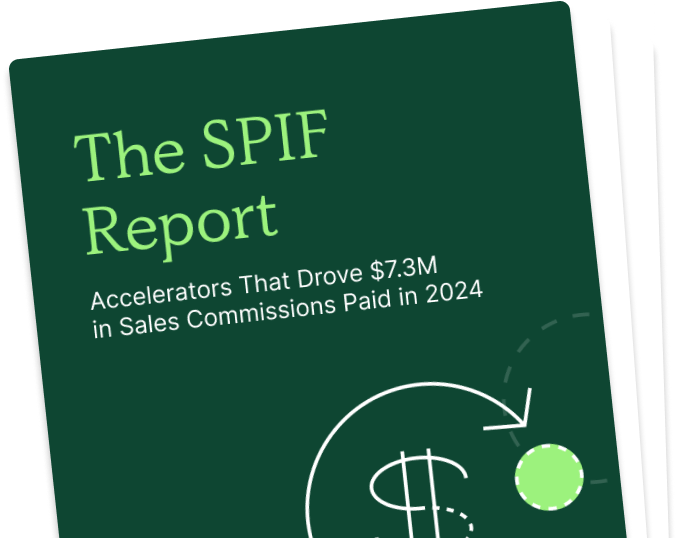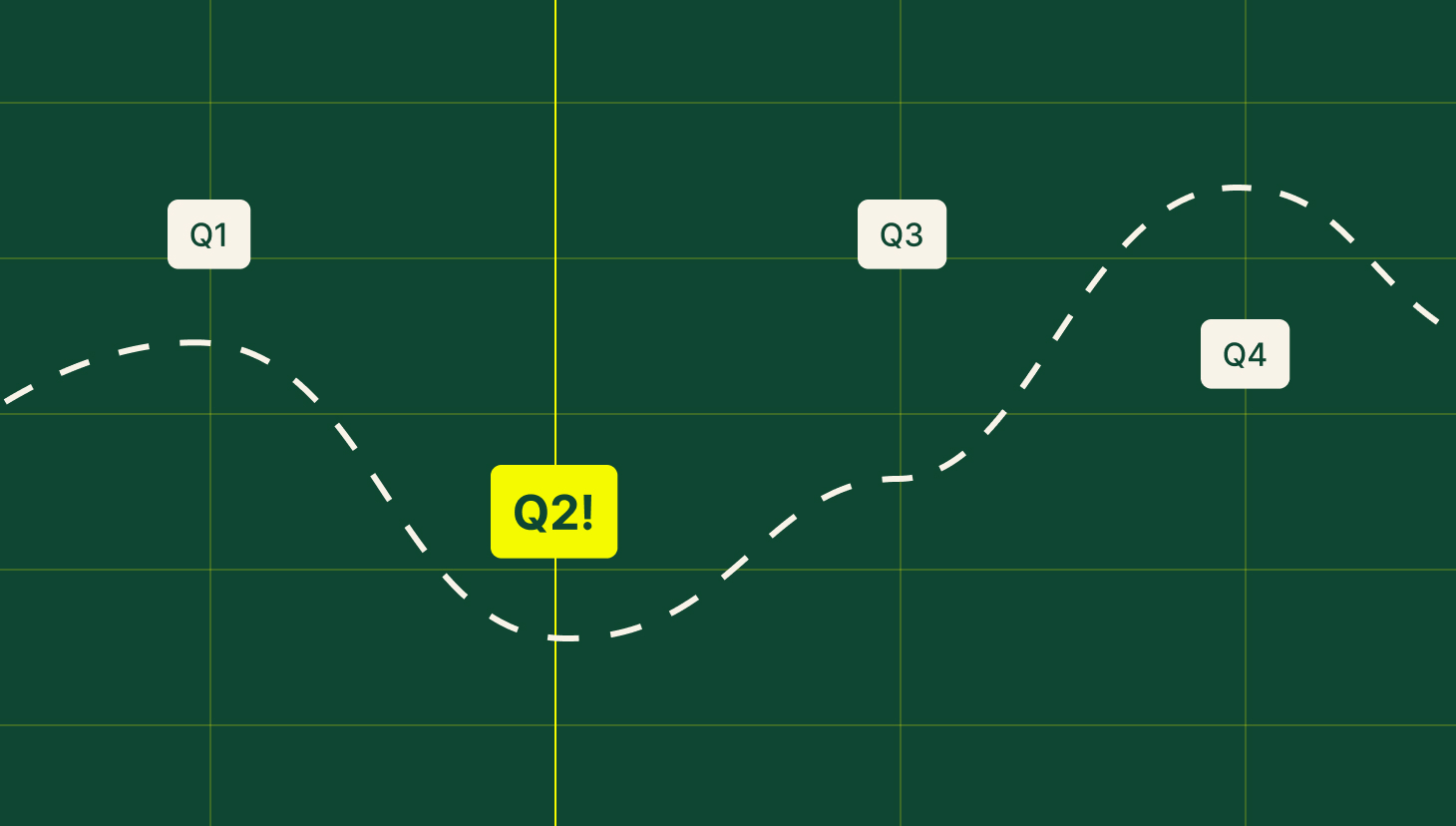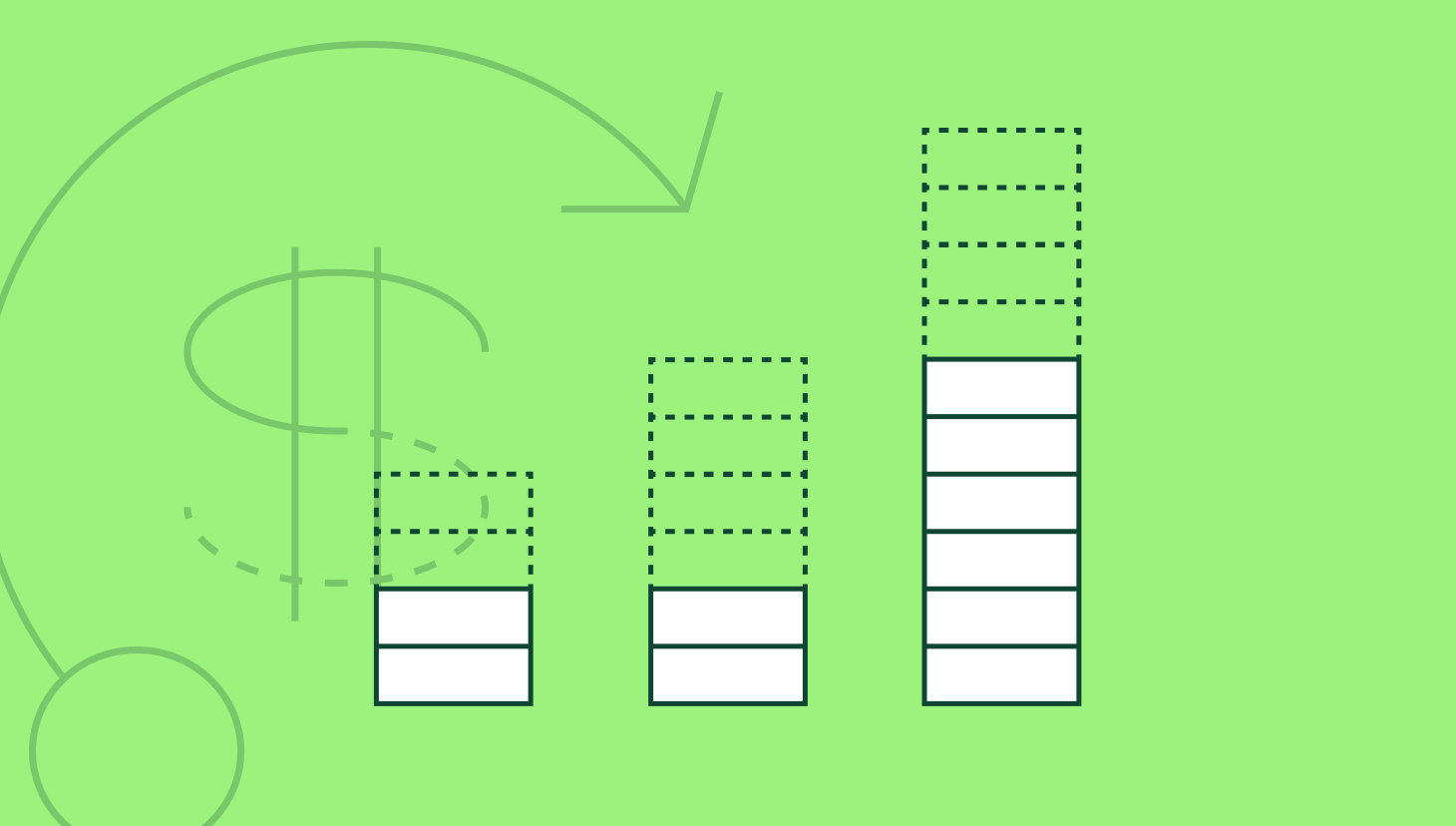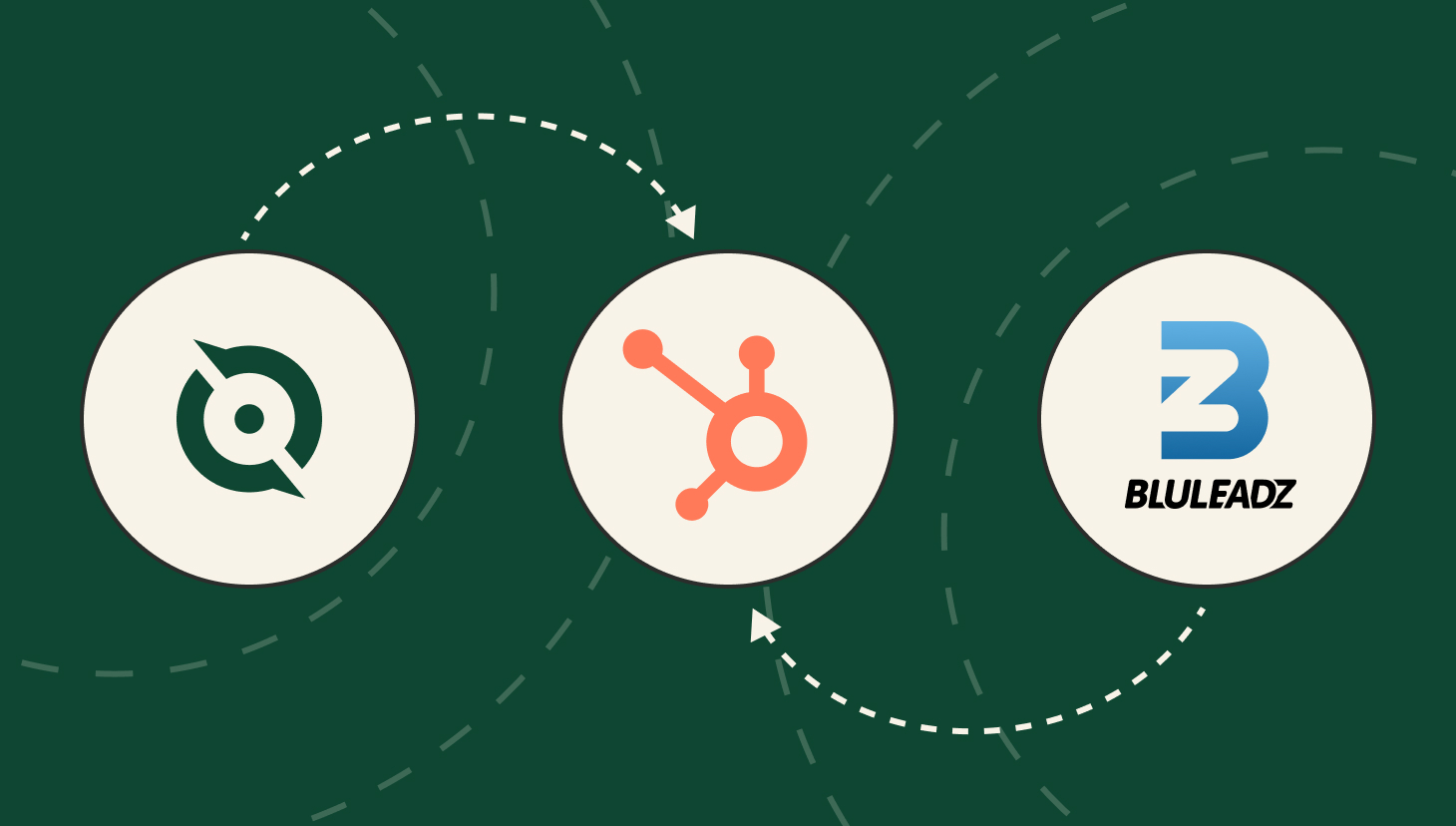Q2 often feels like a slump… even for the strongest sales teams.
Let’s set the scene (although hopefully it’s not too triggering).
Your team came out swinging in Q1.
Fueled by fresh quotas and the urgency of a new year, reps leaned into January’s pipeline with aggressive deal cycles and executive-assisted closes to hit early-year targets. Everyone wins. Attainment is high. Commissions land (accurately and timely, thanks to a little help from your commission automation tool *wink*). And spirits remain up.
But now it’s the Spring.
You notice a lighter demo schedule across your team’s calendars.
Prospect responses slow down.
Your Q2 pipeline looks emptier than you’d like, and reps are feeling the hangover from a front-loaded quarter.
It’s not just your team. It’s the pattern.
Design, track, and manage variable incentives with QuotaPath. Give your RevOps, finance, and sales teams transparency into sales compensation.
Talk to SalesBehind the Q2 Dip
This happens every second quarter.
For many B2B buyers, Q1 represents new budget authority.
That often triggers a wave of purchases aimed at kicking off initiatives early. In contrast, Q2 sees decision-makers re-evaluate spending, delay onboarding, or pause until H2 planning. Add in procurement cycles, fiscal year misalignment, and post-Q1 buyer fatigue, and fewer signed deals follow.
Comp plans don’t always help here.
If quotas are evenly spread across quarters without adjusting for real buying patterns, or worse, if Q1’s quota was heavier to take advantage of early momentum, Q2 can feel like a desert. Sellers see commissions dry up, motivation dips, and attainment suffers.
But this isn’t inevitable.
Below, we’ll cover:
- How seasonal buyer behaviors impact Q2 attainment
- Compensation and quota structuring strategies to offset mid-year slowdowns
- Tactical ways to deploy SPIFs and short-term accelerators
- How leading RevOps teams are using QuotaPath to fix attainment discrepancies and keep teams aligned and motivated

Recommended Reading
The SPIF Report: Curious how top revenue teams use SPIFs and accelerators to align with key business goals and drive measureable results? Our latest report below dives into our data from $7.3M in sales incentives.
View ReportCompensation: The Quiet Culprit Behind Q2 Underperformance
If you’re only looking at pipeline health or rep activity in Q2, you’re missing a big piece of the story. The compensation structure is critical in sustaining momentum following a strong Q1.
Here are a few levers to pull should you find yourself in this situation.
1. Rebalance Quotas Around Seasonality
First, instead of evenly dividing quotas across four quarters, align them to historical attainment data and buyer behavior.
For many SaaS orgs, that might look like:
– Heavier quotas in Q1 and Q4
– Lighter quotas in Q2 when deal velocity slows
-A buffer in Q3 to prep for year-end pushes
To help, you could use QuotaPath’s Plan Performance Modeling tool to simulate different quota distributions to predict rep earnings, attainment, and commission cost impact. Use it to test a “light Q2” model without overcorrecting total OTE.
Calculate OTE:Quota ratios
Use this free calculator to ensure your reps’ on-target earnings and quotas mirror what they’re bringing in for the business.
Try it Now2. Deploy SPIFs Preventatively (not reactively)
Additionally, you could implement SPIFs.
The key, however, is to have these SPIFs lined up before you start to lose out on pipeline.
According to our Q1 SPIF Report, the most effective SPIFs are those tied to very specific behaviors, not just general revenue boosts.
In Q2, consider:
– SPIFs tied to self-sourced opps to offset demand gen lulls
– Bonus for multi-product deals to maximize value per close
– Higher rate accelerators for deals with shorter time-to-close
An easy way to spin up temporary plan components without disrupting core plans is through QuotaPath. Reps see the incentive in real time, while leadership tracks performance in the same dashboard. Frees you up from having to track and calculate SPIFs in an extra spreadsheet, too.
3. Add a Q2-Only Bonus Layer
Even a simple milestone bonus, “Close 3 deals in May, get $500,” can re-inject urgency.
Reps respond well to tangible, near-term goals.
Unlike a quarterly quota that may feel out of reach by mid-May, a defined milestone tied to a bonus delivers immediate focus and motivation, especially for your mid-tier performers.
It gives sellers something they can realistically strive for and track in real time. These bonuses also work especially well in Q2 when the pipeline might be lighter, helping to build momentum through smaller wins.
Pro tip: Include a visual forecast of bonus impact inside your reps’ dashboards. Seeing how close they are to earning more drives action.
(Reps thrive on short-term visibility. QuotaPath’s component-based plan build structure allows you to add these in minutes and toggle them off at the end of the quarter.)
Pipeline Fixes Start with Plan Design
Implementing SPIFs, milestone bonuses, or shifting quota targets isn’t just a flip of the switch. Instead, it starts with how your comp plan is designed and modeled in the first place.
This is where RevOps and Finance teams can get ahead.
Using QuotaPath’s AI-Powered Plan Builder and our Draft Plans feature, you can quickly build different versions of your plan before you roll them out and test them against historical numbers to see how they’d fare. That means less guesswork, more clarity, and faster alignment across stakeholders.
With QuotaPath, teams can:
– Forecast the cost and impact of Q2-only adjustments
– Test SPIF scenarios using real CRM and attainment data
– Visualize how individual reps would be affected based on their historical performance
This level of flexibility gives teams the confidence to act quickly when Q2 shows early warning signs, without risking confusion or misalignment.
Final Thoughts: Get Ahead of the Dip
You don’t need to accept a slow Q2 as the norm.
With thoughtful comp structuring, aligned incentives, and visibility into earnings potential, your team can sustain momentum even when the market slows.
The key? Use your comp plan as a performance driver, not just a calculator.
If reps can see exactly how to earn more, and your plans adapt to real pipeline behavior, Q2 becomes an opportunity, not a letdown.
Learn more by scheduling a time with our team.



